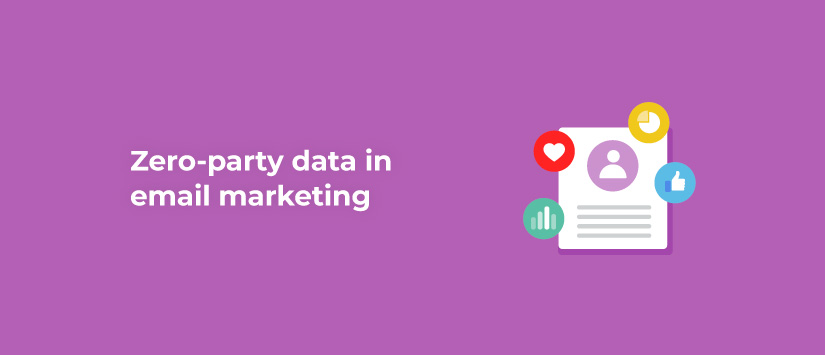Category: Email Marketing Trends

2024 is expected to be the year in which third-party cookies disappear from browsers, causing marketing departments to lose a source of information about potential customers that allowed them to personalize their campaigns, for example, based on retargeting. The control of the use of personal data is gradually shifting to the user and also affects email managers, such as since Apple launched its Mail Privacy Protection, making it difficult to know who opens a message.
So, how can email marketing help collect useful subscriber data and use it to increase the ROI of campaigns?
Personalization of any type of action is only possible if there are data to do so. Depending on how data is obtained, it can be classified as:
Now that third-party data seems to be disappearing, actions to obtain them directly from the source, such as first-party and zero-party data, become more relevant. To differentiate them, we can say that in first-hand data, the user may not be fully aware that they are being monitored, whereas in zero-party data, it is much more evident what is being collected.
It is worth remembering that GDPR applies to all these types of data because it stipulates that the user must give explicit consent for each use that the company will make of them.
There are many formulas to obtain user data voluntarily, and email has been doing it for some time. The possibility of having to expand sources to obtain them requires having a marketing strategy that combines all channels more cohesively.
For example: in the physical store, data can be provided to obtain the loyalty card or to send the invoice by email. Promotions and games can also be created on social networks that require completing a form to participate, and on the website, a pop-up can be included to get a discount in the store if you sign up for the newsletter.
Creating a lead magnet as an incentive is one of the most common formulas. It is important to consider what data is requested: perhaps the email is the minimum, although there are others of more value to the business, such as their date of birth, profession, or their thematic preferences for sending.
Surveys are very useful for companies because they can be used at different moments in the customer journey. In addition, the questions can be of all kinds, from product preferences to more personal opinions that would not otherwise be shared. They can be sent by email shortly after becoming a customer or regularly every year.
Offering free samples is the most direct way to obtain ZPD because the data is clearly requested to do so. Like in the previous cases, the incentive must be valuable to the potential customer, and the company must also obtain useful information. It's a win-win, not trying to deceive or hide intentions.
It is not necessary to create a very long registration form to request data that will not be used or to create customer profiles if the same thing will be sent to the entire list later. That is why it is important to be very clear from the beginning how they will be used, so that segmentation and personalization can be done. For example:
With segmentation, any zero-party data can be used to choose a group from the list, also taking advantage of their behaviour on the website or interactions on social networks they have made. In this way, it is possible to achieve a much higher conversion by offering an experience tailored to their tastes.
Do not miss anything from our blog and join our Telegram https://t.me/acrelianews
Haven't you tried Acrelia News yet?
If you like this post, you will like much more our email marketing tool: professional, easy to use.